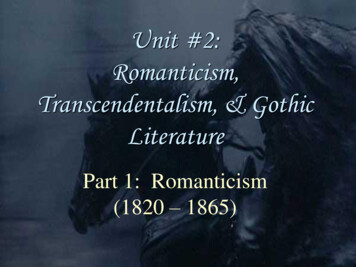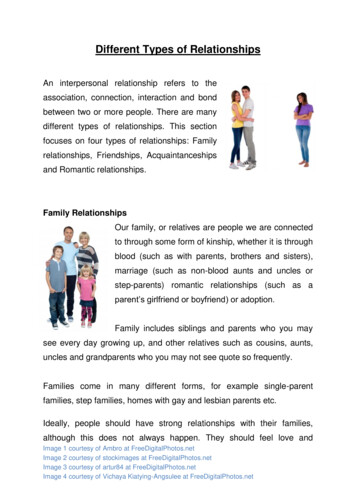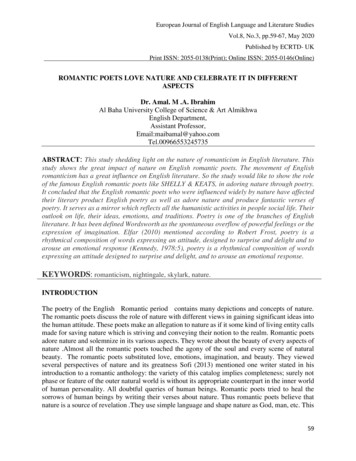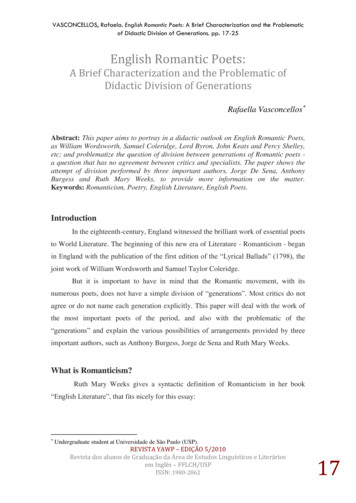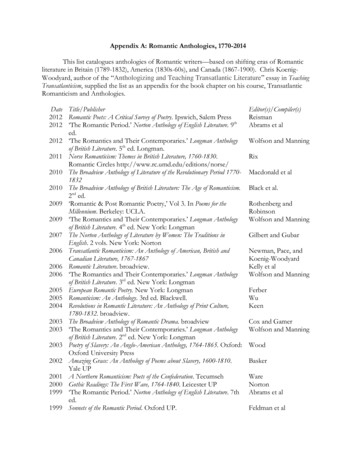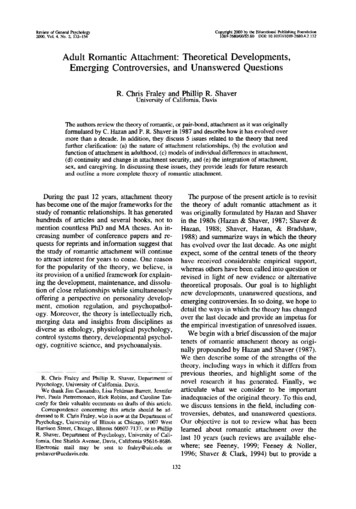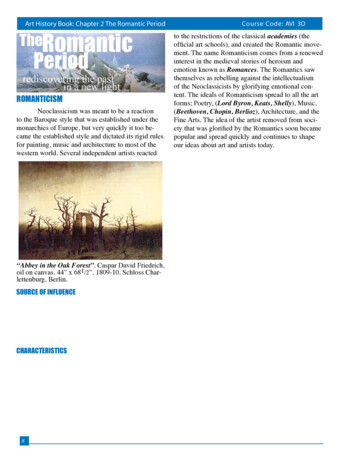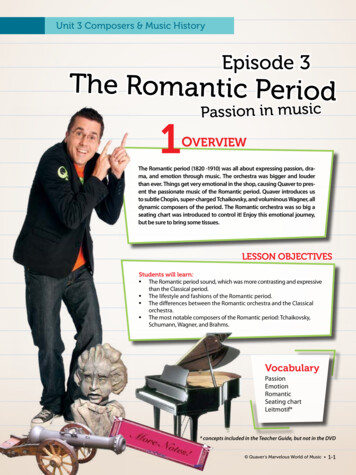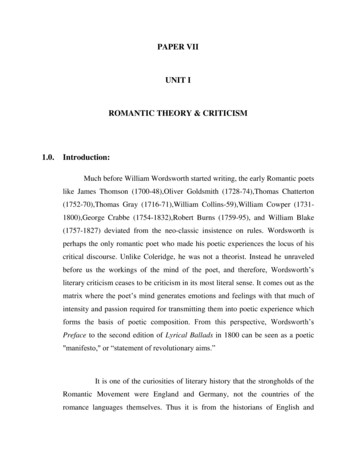
Transcription
PAPER VIIUNIT IROMANTIC THEORY & CRITICISM1.0.Introduction:Much before William Wordsworth started writing, the early Romantic poetslike James Thomson (1700-48),Oliver Goldsmith (1728-74),Thomas Chatterton(1752-70),Thomas Gray (1716-71),William Collins-59),William Cowper (17311800),George Crabbe (1754-1832),Robert Burns (1759-95), and William Blake(1757-1827) deviated from the neo-classic insistence on rules. Wordsworth isperhaps the only romantic poet who made his poetic experiences the locus of hiscritical discourse. Unlike Coleridge, he was not a theorist. Instead he unraveledbefore us the workings of the mind of the poet, and therefore, Wordsworth’sliterary criticism ceases to be criticism in its most literal sense. It comes out as thematrix where the poet’s mind generates emotions and feelings with that much ofintensity and passion required for transmitting them into poetic experience whichforms the basis of poetic composition. From this perspective, Wordsworth’sPreface to the second edition of Lyrical Ballads in 1800 can be seen as a poetic"manifesto," or “statement of revolutionary aims.”It is one of the curiosities of literary history that the strongholds of theRomantic Movement were England and Germany, not the countries of theromance languages themselves. Thus it is from the historians of English and
German literature that we inherit the convenient set of terminal dates for theRomantic period, beginning in 1798, the year of the first edition of Lyrical Balladsby Wordsworth and Coleridge and of the composition of Hymns to the Night byNovalis, and ending in 1832, the year which marked the deaths of both Sir WalterScott and Goethe. However, as an international movement affecting all the arts,Romanticism begins at least in the 1770's and continues into the second half of thenineteenth century, later for American literature than for European, and later insome of the arts, like music and painting, than in literature. This extendedchronological spectrum (1770-1870) also permits recognition as Romantic thepoetry of Robert Burns and William Blake in England, the early writings ofGoethe and Schiller in Germany, and the great period of influence for Rousseau'swritings throughout Europe.The early Romantic period thus coincides with what is often called the"age of revolutions"--including, of course, the American (1776) and the French(1789) revolutions--an age of upheavals in political, economic, and socialtraditions, the age which witnessed the initial transformations of the IndustrialRevolution. A revolutionary energy was also at the core of Romanticism, whichquite consciously set out to transform not only the theory and practice of poetry(and all art), but the very way we perceive the world. Some of its major preceptshave survived into the twentieth century and still affect our contemporary period.1.1.Romanticism:Romanticism (also the Romantic era or the Romantic period) was anartistic, literary, and intellectual movement that originated in Europe toward theend of the 18th century and in most areas was at its peak in the approximate period
from 1800 to 1850. Partly a reaction to the Industrial Revolution, it was also arevolt against the aristocratic social and political norms of the Age ofEnlightenment and a reaction against the scientific rationalization of nature. It wasembodied most strongly in the visual arts, music, and literature, but had a majorimpact on historiography, education and the natural sciences. Its effect on politicswas considerable and complex; while for much of the peak Romantic period it wasassociated with liberalism and radicalism, its long-term effect on the growth ofnationalism was probably more significant.The movement validated intense emotion as an authentic source of aestheticexperience, placing new emphasis on such emotions as apprehension, horror andterror, and awe—especially that which is experienced in confronting the sublimityof untamed nature and its picturesque qualities: both new aesthetic categories. Itelevated folk art and ancient custom to a noble status, made spontaneity adesirable characteristic (as in the musical impromptu), and argued for a naturalepistemology of human activities, as conditioned by nature in the form oflanguage and customary usage. Romanticism reached beyond the rational andClassicist ideal models to raise a revived medievalism and elements of art andnarrative perceived to be authentically medieval in an attempt to escape theconfines of population growth, urban sprawl, and industrialism. Romanticismembraced the exotic, the unfamiliar, and the distant in modes more authentic thanRococo chinoiserie, harnessing the power of the imagination to envision and toescape.Although the movement was rooted in the German Sturm und Drangmovement, which prized intuition and emotion over the rationalism of theEnlightenment, the events of and ideologies that led to the French Revolution
planted the seeds from which both Romanticism and the Counter-Enlightenmentsprouted. The confines of the Industrial Revolution also had their influence onRomanticism, which was in part an escape from modern realities. Indeed, in thesecond half of the 19th century, "Realism" was offered as a polar opposite toRomanticism. Romanticism assigned a high value to the achievements of 'heroic'individualists and artists, whose pioneering examples, it maintained, would raisethe quality of society. It also vouched for the individual imagination as a criticalauthority allowed of freedom from classical notions of form in art. There was astrong recourse to historical and natural inevitability, a Zeitgeist, in therepresentation of its ideas.1.1.1. The Term:The group of words with the root "Roman" in the various Europeanlanguages, such as romance and Romanesque, has a complicated history, but bythe middle of the 18th century "romantic" in English and romantique in Frenchwere both in common use as adjectives of praise for natural phenomena such asviews and sunsets, in a sense close to modern English usage but without theimplied sexual element. The application of the term to literature first becamecommon in Germany, where the circle around the Schlegel brothers, critics Augustand Friedrich, began to speak of romantische Poesie ("romantic poetry") in the1790s, contrasting it with "classic" but in terms of spirit rather than merely dating.Friedrich Schlegel wrote in his Dialogue on Poetry (1800), "I seek and find theromantic among the older moderns, in Shakespeare, in Cervantes, in Italian poetry,in that age of chivalry, love and fable, from which the phenomenon and the worditself are derived." In both French and German the closeness of the adjective toroman, meaning the fairly new literary form of the novel, had some effect on thesense of the word in those languages. The use of the word did not become general
very quickly, and was probably spread more widely in France by its persistent useby Madame de Staël in her De L'Allemagne (1813), recounting her travels inGermany. In England Wordsworth wrote in a preface to his poems of 1815 of the"romantic harp" and "classic lyre", but in 1820 Byron could still write, perhapsslightly disingenuously, "I perceive that in Germany, as well as in Italy, there is agreat struggle about what they call 'Classical' and 'Romantic', terms which werenot subjects of classification in England, at least when I left it four or five yearsago". It is only from the 1820s that Romanticism certainly knew itself by its name,and in 1824 the Académie française took the wholly ineffective step of issuing adecree condemning it in literature.1.1.2. Context and Place in History:The more precise characterization and specific definition of Romanticismhas been the subject of debate in the fields of intellectual history and literaryhistory throughout the 20th century, without any great measure of consensusemerging. That it was part of the Counter-Enlightenment, a reaction against theAge of Enlightenment, is generally accepted. Its relationship to the FrenchRevolution which began in 1789 in the very early stages of the period, is clearlyimportant, but highly variable depending on geography and individual reactions.Most Romantics can be said to be broadly progressive in their views, but aconsiderable number always had, or developed, a wide range of conservativeviews, and nationalism was in many countries strongly associated withRomanticism, as discussed in detail below.In philosophy and the history of ideas, Romanticism was seen by IsaiahBerlin as disrupting for over a century the classic Western traditions of rationality
and the very idea of moral absolutes and agreed values, leading "to something likethe melting away of the very notion of objective truth", and hence not only tonationalism, but also fascism and totalitarianism, with a gradual recovery comingonly after the catharsis of World War II. For the Romantics, Berlin says,in the realm of ethics, politics, aesthetics it was the authenticity andsincerity of the pursuit of inner goals that mattered; this applied equally toindividuals and groups — states, nations, movements. This is most evident in theaesthetics of romanticism, where the notion of eternal models, a Platonic vision ofideal beauty, which the artist seeks to convey, however imperfectly, on canvas orin sound, is replaced by a passionate belief in spiritual freedom, individualcreativity. The painter, the poet, the composer do not hold up a mirror to nature,however ideal, but invent; they do not imitate (the doctrine of mimesis), but createnot merely the means but the goals that they pursue; these goals represent the selfexpression of the artist's own unique, inner vision, to set aside which in responseto the demands of some "external" voice — church, state, public opinion, familyfriends, arbiters of taste — is an act of betrayal of what alone justifies theirexistence for those who are in any sense creative.Arthur Lovejoy attempted to demonstrate the difficulty of definingRomanticism in his seminal article "On The Discrimination of Romanticisms" inhis Essays in the History of Ideas (1948); some scholars see Romanticism asessentially continuous with the present, some like Robert Hughes see in it theinaugural moment of modernity, and some like Chateaubriand, 'Novalis' andSamuel Taylor Coleridge see it as the beginning of a tradition of resistance toEnlightenment rationalism—a 'Counter-Enlightenment'— to be associated mostclosely with German Romanticism. An earlier definition comes from Charles
Baudelaire: "Romanticism is precisely situated neither in choice of subject norexact truth, but in the way of feeling."The end of the Romantic era is marked in some areas by a new style ofRealism, which affected literature, especially the novel and drama, painting, andeven music, through Verismo opera. This movement was led by France, withBalzac and Flaubert in literature and Courbet in painting; Stendhal and Goya wereimportant precursors of Realism in their respective media. However, Romanticstyles, now often representing the established and safe style against which Realistsrebelled, continued to flourish in many fields for the rest of the century andbeyond. In music such works from after about 1850 are referred to by somewriters as "Late Romantic" and by others as "Neoromantic" or "Postromantic", butother fields do not usually use these terms; in English literature and painting theconvenient term "Victorian" avoids having to characterize the period further.In northern Europe, the Early Romantic visionary optimism and belief thatthe world was in the process of great change and improvement had largelyvanished, and some art became more conventionally political and polemical as itscreators engaged polemically with the world as it was. Elsewhere, including invery different ways the United States and Russia, feelings that great change wasunderway or just about to come were still possible. Displays of intense emotion inart remained prominent, as did the exotic and historical settings pioneered by theRomantics, but experimentation with form and technique was generally reduced,often replaced with meticulous technique, as in the poems of Tennyson or manypaintings. If not realist, late 19th-century art was often extremely detailed, andpride was taken in adding authentic details in a way that earlier Romantics did nottrouble with. Many Romantic ideas about the nature and purpose of art, above all
the pre-eminent importance of originality, continued to be important for latergenerations, and often underlie modern views, despite opposition from theorists.2.0.The Romantic Revival:It is a fact that the French Revolution, the Napoleonic words and othersocial and political events did not initiate the Romantic Movement but enriched itscontent. The term romantic, however, first appeared in the mid seventeenthcentury English to describe what Chew and Altick called “the fabulous, theextravagant, the factious, and the unreal.” However, by the mid eighteenth centurythe term came to describe “pleasing” scenes and situation. What followed nextwas a prevalence of instincts and emotions over rationalism and common sense. Itseems that the term romantic as a literary phenomenon was not perceived in thesame vain and with the same degree of intensity in different contexts. This resultedin the use of the term to describe different tendencies at different times in differentcontexts. The same can be said of the term ‘romanticism’. It refers to a theory, aschool of thought, and a matter of technique and so on. The poets and the writersnot only sought to emancipate themselves from the fetters of neo-classical rulesbut also experimented with the old forms, revived some of them which went intothe oblivion because the neo-classical writers considered them to be vulgar andundignified. In course of such experimentation with forms, revival of form orcreations of new forms, following tendencies were noticed: The poet put more emphasis on imagination rather than intellect. Theyallowed free play of imagination in their poetry. Their free flights of fancy oftenled them to the strange, unfamiliar and the distant.
The infatuation for the remote, the exotic and the mysterious enkindledin the romantic poets a love for the medieval. Just as the writers of the eighteenthcentury turned to classical writers for inspiration, the poets of the romantic revivalturned to medieval age for inspiration. “The essential elements of the romanticspirit are curiosity and the love of beauty, and it is as the accidental effect of thesequalities only, that it seeks the Middle Ages, because in the overchargedatmosphere of the Middle Ages there are unworked sources of romantic effect, ofa strange beauty to be won by strong imagination out of things unlikely orremote.” (Pater, W .) They gave free reign to their emotion and passion. They abhorredclassical restraint and obsession with reason. Their preoccupation with imagination and emotions made theirpoetry primarily subjective. This was in contrast with the classicalpreference for objectivity in poetry. For them poetry was not genuineif it was not personal. Poetry became closer to everyday life of common man. The ‘poeticdiction’ of the eighteenth century was rejected as artificial andunnatural. ”Return to nature” was their motto. They turned away from theartificial urban life and found refuge in the country life and nature.
They worshipped nature. Love of nature for them meant love ofmankind, humanism and a more world view that encompassed theidea of freedom and equality.The following table presents the contrast between the neo-classic and theromantic:RomanticEmphasis on ImaginationFree Play of Emotions and PassionsProximity to the everyday life of commonmanInspiration sought from country life andnaturePrimarily SubjectiveTurned to Medieval Age for inspiration2.1.Neo-ClassicalEmphasis on IntellectRestraint and Obsession with ReasonRemoteness or aloofness from everyday lifeIncidents from urban life prevailedPrimarily ObjectiveTurned to Classical writers for inspirationImpact of French Revolution:The Romantic Revival is the result of many forces. One of the significantforces that shaped Romantic Revival is the French Revolution (1789–1799). TheFrench Revolution in its bottom line brought a violent end to feudal powers andmonarchy and asserted the right and supremacy of the individual free will. Thenew philosophy of the rights of all men was expressed both in politics andliterature. This led to the “Liberalism in Literature.” The political liberalism ofFrench Revolution inspired the liberation, individuality and rejection of prescribedrules in the Romantic Literature. The Romantic poets were inspired by the ideals
of equality, fraternity and liberty. They revolted against the tyranny of setformulas, rules and conventions. They asserted the dignity of individual spirit.This new form of philosophy became one of the main guidelines of a new schoolof Romantic poets, writers and philosophers. Romantic’s search for fresh subject,their belief in nature, their emphasis upon spontaneity and their belief thateveryone has a right to express his own idea are the features of individualismwhich was the prime demand of French Revolution.3.0.Classicism and Romanticism:In a famous book, The Mirror and the Lamp (1953), M.H. Abramsdistinguishes theories of art and criticism in terms of whether and how theyprivilege one or more terms or relationships in a set diagrammed like this:So, some of our oldest theories of art define and value (or, in Plato's case,condemn) art in terms of the relationship of Mimesis which obtains between worksof art and the universe, the world to which it relates. This is a major element ofClassicism. Likewise, there are long traditions which characterize and value art interms of its ability to please and instruct', and consequently focus on the rhetoricalor pragmatic relationship between work and audience. There is a line from Greek
theories of Catharsis (q.v. Mimesis and Katharsis' on this website), through thehistory of rhetoric to contemporary reader - response criticism, as surveyed, forexample, in Robert Holub's Reception Theory or in Elizabeth Freund's The Returnof the Reader.One might say that before the Romantic movement (say, 1770 - 1830) mosttheories of art simply took for granted the unimportance of the relationshipbetween artist and work; where it obtruded itself (as in lyric poetry or the self portrait), they responded by regarding those genres as minor and not worththeorizing. In the eighteenth century, says Abrams, Shakespeare's sonnets, unlikehis plays, were simply ignored or condemned (p. 246).Romanticism is, then, a critical watershed as well as a permanentpossibility of artistic orientation, an orientation which emphasizes and values thework of art as Expressive of the artist's mind. Historically, the Romanticmovement - for example, in English poetry and the theorizing of it by Wordsworthand Coleridge - wants the work to be expressive of the artist's emotions andfeelings: poetry, says Wordsworth in the Preface' to the Lyrical Ballads (1800), is the spontaneous overflow of powerful feelings', not directed in their origin toany external audience, and illuminating the objective world with the lamp of asubjective experience.In Romanticism as a movement, Poetry - as the expression of emotion - iscategorically contrasted with Science, as representation of reality. It is not opposedto prose, which may be poetic or scientific, according to its informing subjectiveor objective drive.
One might say that there is no reason not to regard as Romantic' any theoryor practice of art which values the self-realization of the artist in his or her work,even when what is realized is more like a vision, or ideas and beliefs, than like arealization of simple' emotion. In this way one would be led to distinguish thequestion of whether self-expression or self-realization is important in or definingof art from the question of whether certain traditionally romantic oppositions, suchas those between feeling and reason; subjective and objective; emotion and fact,are tenable. There are, of course, many good arguments to suggest that the stockromantic oppositions are untenable. For a survey of the arguments, see DavidBest's The Rationality of Feeling.Romanticism as a movement implied and articulated significantly freshevaluative criteria for art, notably the criteria of sincerity and spontaneity. Whatwe now think of as later aestheticism and decadentism is, in part, a reactionagainst such criteria as demonstrably inadequate to judge a work of art. ThusOscar Wilde in The Decay of Lying' (against, inter alia, Mrs Humphry Ward'sRobert Elsmere) and, in another context, Baudelaire's address to the hypocritelecteur, mon semblable, mon frere', Modern neo-classicism is, one might say, acleaned-up version of aestheticism and decadence, which insists - in opposition tothe romantic orientation and the romantic criteria - on the autonomy of the work ofart, on judging the work itself, the words on the page', all considerations ofbiography (and hence of sincerity and spontaneity) excluded. Though associatedwith theorists of conservative and illiberal persuasions, notably the American New Critics' and T.S. Eliot, neo-classicism has also had its radical spokesmen,foremost among them Brecht, whose epic theatre is consciously anti-romantic(see, for example, Brecht's Messingkauf Dialogues).
Of course, for educationists the Romantic orientation and criteria were andremain of immense importance. This extends beyond the Romantic emphasis onself-expression, sincerity and spontaneity to the connected romantic claim thatpoetry (art) does not please and instruct' but is directly effective as an emotionallyand, more generally, morally educative force. For Wordsworth, says Abrams, poetry, by sensitizing, purifying and strengthening the feelings, directly makes usbetter' (p. 330). John Stuart Mill, in an 1835 essay on Tennyson's poems, states theclaim in its grandest terms, speaking of the noblest end of poetry as an intellectualpursuit, that of acting upon the desires and characters of mankind through theiremotions, to raise them towards the perfection of their nature' (cited in Abrams, p.334).This is still a characteristic way of justifying the arts in education, thebackground matrix of which is an equation of imagination, sympathy and moraldevelopment . But after Auschwitz, says the German critic Theodor Adorno, suchclaims are unsustainable. Worse, to write lyric poetry after Auschwitz is barbaric'(in Bloch et al., Aesthetics and Politics, pp. 188 - 89). It is worse than insensitiveto go on as if the redemptive claims of the Romantic movement had not beenhopelessly discredited by history, says Adorno.Of course, there is an enormous shift in arts education away from theorientations and values of Romanticism, or, more specifically, self - expression, asis evidenced in the work of the arts educationist Peter Abbs in such books asLiving Powers and A Is for Aesthetic. Romanticism yields to a neo-classicalemphasis on the work itself, on its forms and genres, its traditions and techniques,
and arts education becomes less the search for sincerity, spontaneity and selfexpression than the patient initiation of pupils into the forms of artistic knowing.On the other hand, if there is nothing to be known felt, imagined,concretized through the forms of artistic knowing, then they have no more claim toour interest than a parlour game. Deprived of a link to deep human concerns,poetry would be no better than a playstation game. (Trevor Pateman)3.1.Romantic Theory:The British Romantic period designates the time period 1785–1830.Romantic poets and writers would not have considered themselves similar andmany of the writers considered canonical today were not popular until later in theircareers or after their deaths. This period, nonetheless, designates a time in whichmany writers were responding to similar events and ideas about the form andfunction of literature.The period was socially turbulent and imported revolutionary ideas createdsocial conflict, often along class lines. The French Revolution had an importantinfluence on the fictional and nonfictional writing of the Romantic period,inspiring writers to address themes of democracy and human rights and to considerthe function of revolution as a form of apocalyptic change. In the beginning, theFrench Revolution was supported by writers because of the opportunities itseemed to offer for political and social change. When those expectations werefrustrated in later years, Romantic poets used the spirit of revolution to helpcharacterize their poetic philosophies. The Industrial Revolution, while bringing
about changes in manufacturing and thus improving the efficiency of production,brought about a different and related reaction in literature that addressed the rightsof the laboring classes and improved labor conditions.This revolutionary spirit prompted Romantic poets to posit new theoriesabout the function and form of poetry. These arguments are demonstrated inWordsworth's Lyrical Ballads and Percy Bysshe Shelley's A Defence of Poetry.Romantic poets presented a theory of poetry in direct opposition to representativeeighteenth-century theories of poetry as imitative of human life and nature bysuggesting that poetic inspiration was located not outside in nature, but inside thepoet's mind, in a "spontaneous" emotional response. This new theory of poetryalso posited new possible subjects of poetic expression in a revaluation of theoutcast, delinquent, and the supernatural. Indeed, it often reveled inrepresentations that made the ordinary appear miraculous. This wonder at theordinary was often achieved in making the natural appear supernatural. Suchrepresentations often exemplify the interest of much Romantic poetry indescribing and depicting alternate states of consciousness.Literature also became a profitable business in the Romantic period withthe increase of potential readership due to education reform and increased literacy.Improved printing technology and a new aesthetic valuation of art and literaturefor its own sake contributed to the growth of literature as a business. Attendantupon the increased profitability of literature was the growth of the periodicalindustry and the consequent added importance of the essay as a literary and criticalform. Taking inspiration from their poetic counterparts, Romantic essayists prizeda subjective viewpoint and often took on an autobiographical tone.
In addition to the essay, drama and the novel experienced formal revision inthe Romantic era. Playwrights such as Shelley and Byron attempted to revitalizethe poetic play, but without much practical success. Aside from a lack ofpopularity, only Drury Lane and Covent Garden theaters had the right to producespoken drama thanks to a licensing act that was not repealed until 1843. Unlikedrama, the novel increased in popularity and prominence with two new genres: thegothic novel and the novel of purpose. While the latter sought to propagate thesocial and political theories of the day, the former was less didactic and moreinterested in terror, perversion, and mystery. William Godwin's Caleb Williams isan appropriate example of the novel of purpose. Ann Radcliffe, Gregory Lewis,and Mary Wollstonecraft Shelley all wrote gothic fiction. Although interested inhistoric novels more than gothic or novels of purpose, Sir Walter Scott also rose toprominence in this period.The chief precepts of the Romantic Theory are as follows: Imagination:The imagination was elevated to a position as the supreme faculty ofthe mind. This contrasted distinctly with the traditional argumentsfor the supremacy of reason. The Romantics tended to define and topresent the imagination as our ultimate "shaping" or creative power,the approximate human equivalent of the creative powers of natureor even deity. It is dynamic, an active, rather than passive power,with many functions. Imagination is the primary faculty for creatingall art. On a broader scale, it is also the faculty that helps humans toconstitute reality, for (as Wordsworth suggested), we not onlyperceive the world around us, but also in part create it. Uniting bothreason and feeling (Coleridge described it with the paradoxical
phrase, "intellectual intuition"), imagination is extolled as theultimate synthesizing faculty, enabling humans to reconciledifferences and opposites in the world of appearance. Thereconciliation of opposites is a central ideal for the Romantics.Finally, imagination is inextricably bound up with the other twomajor concepts, for it is presumed to be the faculty which enables usto "read" nature as a system of symbols. Nature:"Nature" meant many things to the Romantics. As suggested above,it was often presented as itself a work of art, constructed by a divineimagination, in emblematic language. For example, throughout"Song of Myself," Whitman makes a practice of presentingcommonplace items in nature--"ants," "heap'd stones," and "pokeweed"--as containing divine elements, and he refers to the "grass" asa natural "hieroglyphic," "the handkerchief of the Lord." Whileparticular perspectives with regard to nature varied considerably-nature as a healing power, nature as a source of subject and image,nature as a refuge from the artificial constructs of civilization,including artificial language--the prevailing views accorded naturethe status of an organically unified whole. It was viewed as"organic," rather than, as in the scientific or rationalist view, as asystem of "mechanical" laws, for Romanticism displaced therationalist view of the universe as a machine (e.g., the deistic imageof a clock) with the analogue of an "organic" image, a living tree ormankind itself. At the same time, Romantics gave greater attent
ROMANTIC THEORY & CRITICISM 1.0. Introduction: Much before William Wordsworth started writing, the early Romantic poets like James Thomson (1700-48),Oliver Goldsmith
